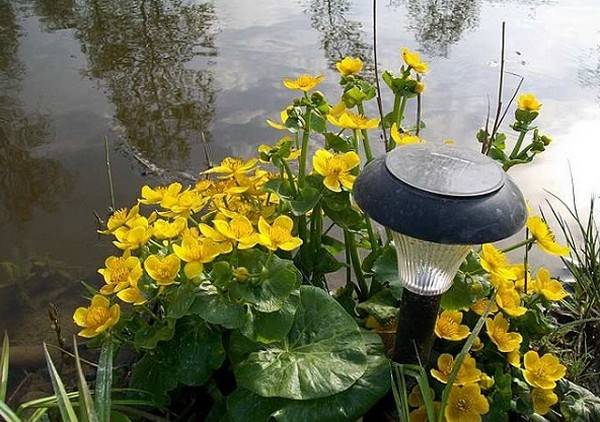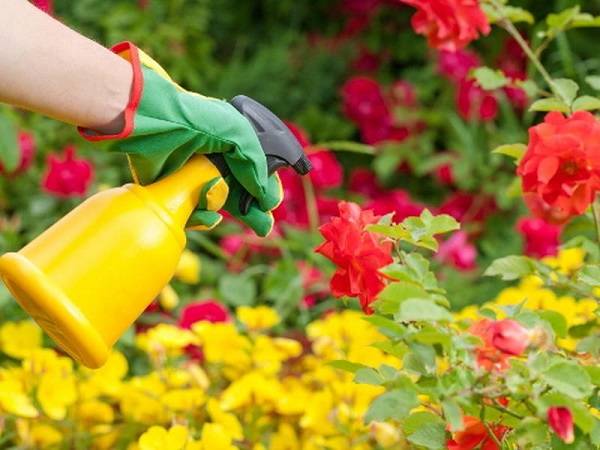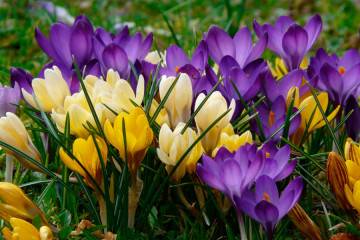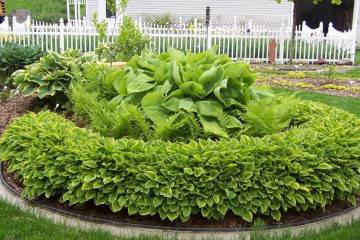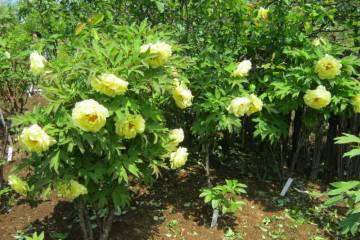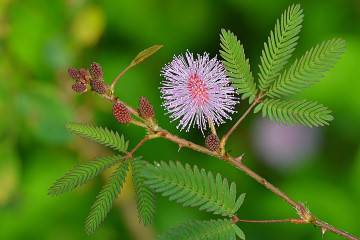Marsh marigold (Сaltha palustris) - herb for the garden
Content:
After a long winter sleep, one of the first to wake up is the favorite of many flower growers and gardeners - marsh marigold. As a rule, it is grown in summer cottages for decorative purposes. In addition, the plant has medicinal properties.
What does the marsh marigold look like
The first official mention of the Caltha palustris plant appeared in 1753. It was then that Karl Linnaeus drew attention to him. There are earlier mentions of this plant in the writings of Ancient Rome and Greece. In them, the marigold is called "long-flowered". In those days, with the help of a plant, eye diseases were treated. The real name came from Ancient Russia, since the marigold grew mainly in swamps.
You can recognize the marsh marigold by the following description: a compact herb with yellow buds. It begins to bloom early, luxuriantly and abundantly. Greens appear at the same early date. That is why it is precisely it that is often used in landscape design.
Kaluzhnitsa is a perennial flower. Belongs to the buttercup family. The height of the plant depends on the place of growth: low growth - only up to 40 cm in soil, very high - up to 3 meters in water.
Has a fleshy trunk. It can be standing straight, and creeping on the surface of the earth, and ascending. The foliage is a deep, deep green in the shape of a heart. The edges are jagged. On the back surface of the leaf plate, blue-red streaks. The sheet size varies from 15 to 20 cm.
The flowers are about 5 cm in diameter. They have a predominantly sunny yellow color. You can find specimens of a different color. For example, white, golden, orange. Blooms from April to May. The first flowering begins when the plant reaches 8 years of age.
Popularly, the marigold flower has the following names:
- frog grass;
- water snake;
- paddling pool;
- partly blind.
Healing properties
Marsh marigold has medicinal properties. It includes:
- alkaloids;
- steroids;
- coumarins;
- saponins.
The inflorescences are rich in quercetin and flavanoids.
Preparations based on this plant have the following actions:
- normalize metabolism;
- relieve inflammation;
- anesthetize.
Traditional medicine suggests preparing decoctions based on leaves to relieve pain and inflammation. The herbal decoction can be added to the bath to treat rheumatism and colds.
Common varieties of Сaltha palustris
There are a huge number of plant varieties. Despite the short flowering, even one greenery is a worthy decoration of the garden. Over time, new varieties were obtained with even brighter flowering, pleasing for a long period of time:
- Floating marigold (Caltha natans) with white flowers is perfect for decorating artificial reservoirs and ponds.
- The membranous marigold (Caltha membranacea) is a plant with large leaves and small yellow flowers. Differs in lush flowering.
- Marsh marigold (Caltha palustris) is a perennial with dark green leaves and rich, bright yellow flowers. The flowering time is 20 days.After the end of the growing season, the leaves darken. It grows mainly in Central Asia, Siberia, the Far East, and the European part of Russia. Prefers swamps, forests, places near water bodies, along rivers, lakes.
- Two-flowered marigold (Caltha biflora) is native to the northern part of America. The bush is quite compact. Height is from 8 to 10 cm. It blooms in May with small white flowers.
- Forest marigold (Caltha sylvestris) has a powerful erect stem. Height is no more than 1.5 meters. Flowers are collected in groups of 10 to 15 white flowers. It grows on the territory of China, Korea, the Far East.
- The marigold (Caltha fistulosa) is a giant compared to its relatives. When it blooms, it reaches no more than 30 cm. After that, it stretches up to 1.2 meters. Strong branches and stem. The foliage is dark green in color. Flowers from 5 to 7 cm in diameter, bright yellow.
- White marigold (Caltha palustris var alba) is a plant up to 20 cm high. White flowers are located singly. The core is yellow.
- Terry marsh marigold (Caltha palustris plena) is a small ball-shaped shrub. About 30x30 cm. The flowers are bright yellow with a double surface.
- Lush marsh marigold (Caltha palustris subsp laeta) is a perennial plant. The stem branches weakly. It grows no higher than 1.5 meters. Flowers, like many representatives of this family, are yellow. Flowering lasts all summer until October.
- The many-petalled marigold (Caltha polypetala) grows in the mountainous areas of Asia and the Caucasus. Lush flowering, which makes the shrub voluminous. The flowers are large enough - from 6 to 8 cm in diameter. The color of the petals is golden.
- Marsh marigold (Caltha palustris ssp procumbens) has an ascending stem. Single yellow flowers.
Features of caring for marigold marsh at home
For a plant to grow and develop, be healthy and enjoy flowering, it needs appropriate care. It also influences the place in which it grows: in the open ground (summer cottage) or it is at home.
The plant loves moisture, so frequent watering is required. During the season, it needs to be fed 2-3 with mineral fertilizers.
Ground and lighting
The ideal soil for marigold is loam. It is rich in nutrients and has sufficient porosity. Fully lit or shaded areas are suitable for growing a flower.
When and how it blooms
The flowering period is 2 months (April and May). There is a gradual opening of buds on elongated peduncles. The petals absorb sunlight, creating a warm atmosphere inside the bud, which begins to gain color. The flower has 5 petals and a simple perianth. There are ordinary flowers with a smooth surface of the petals, and there are double or velvet.
At the very beginning of flowering, you need to apply a small amount of mineral fertilizers. This will help all buds to form correctly and become voluminous, lush. At the end of the flowering period, all inflorescences that have dried are cut off. This must be done for the growth of a bright green decorative mass.
Reproduction of marigold
Reproduction of a perennial plant in natural conditions occurs by seeds and root processes. At home, this can still be done by dividing the bush.
At the end of winter, seeds are sown in special containers in order to obtain seedlings.But first, the seeds must be kept at 10 degrees above zero for a month. Then, for 2 months, the temperature is raised to 20 degrees above zero.
Seedlings grown from seeds must be planted in separate containers. When diving, it must be soaked in a growth stimulator. This is necessary for faster root formation and good survival of young plants. You can buy products that stimulate plant growth in specialized stores.
Planting seeds in open ground in the garden is carried out in spring or autumn. In the latter case, the procedure is easier.. When planting seeds in spring, they must be hardened for 30 days at a temperature of 10 to 15 degrees above zero. In the fall, everything happens naturally. It is enough to scatter the seeds on the ground. You don't even need to terminate. Seedlings will appear in the spring.
Reproduction by layering
Find the longest stem and attach it to the ground. To do this, you can use a hairpin or a brace made of plastic, metal. The fixed section of the stem is carefully sprinkled with soil. But in the ground should be a node from which leaves are formed, not an internode. When the roots appear, you need to carefully separate the layers and plant them in a separate area.
Dividing the bush
The marigold is carefully dug out of the ground, removing the remnants of the earth from the roots. Take a sharp knife and cut it into two equal parts. Each part should be with roots and shoots. They are planted immediately on a permanent growth site. The best time for the procedure is spring, before flowering begins.
Transfer
The plant requires a transplant every 4 years. Autumn, spring is the time for transplanting. If in spring, then at the very beginning of March. This procedure can be called "rejuvenating". Can be combined with reproduction - root division.
Possible growing problems
The marigold has good immunity from pests and diseases. The main pest for marigold, which is a real danger, is several species of flies. The eggs they lay can be found on the juiciest leaves. It is easy to deal with them, since there are a small number of them. Sometimes it is enough just to cut off the leaves on which there are eggs or already larvae.
The plant sheds buds and leaves
The only thing that can be encountered when growing is poor flowering. This is due to a lack of moisture or insufficient light. Increase watering and transfer (transplant) the flower to a sunnier place.
The pallor of the leaves or rust on them is a defeat by powdery mildew. It is enough to carry out the treatment with Bordeaux liquid. If the tips dry, then watering is insufficient or too hot climate.
Marsh marigold is a plant that, if grown correctly, can not only decorate any place on which it will be planted. She is still able to help with various diseases.


